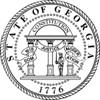
Governor Perdue Announces Names of G8 Sea Turtles
| Thursday, May 27, 2004 |
Contact: Office of Communications 404-651-7774
|
Turtles Named by Elementary School Children in Honor of the Summit Countries
ATLANTA, GA - Governor Sonny Perdue announced today the names for eight Georgia loggerhead sea turtles involved in a new satellite telemetry project that the Georgia Department of Natural Resources (DNR), Wildlife Resources Division (WRD) will launch in the coming weeks. Elementary school children from across the state submitted names for the sea turtles in honor of the countries participating in the G-8 Summit, which are the United States, France, Germany, Japan, the United Kingdom, Italy, Canada, and Russia. The G-8 Summit is scheduled for June 8 - 10, 2004 on Sea Island, Georgia.
"Naming these sea turtles will raise awareness about the upcoming G-8 Summit and increase recognition of the Georgia coast and its importance to species such as loggerhead sea turtles," said Governor Sonny Perdue. "The sea turtles will be nesting on Georgia's beaches during the G-8 Summit, and special training has been provided to law enforcement personnel about the sensitivity of the coastal ecosystem including the nesting habits of this threatened species."
Over 1,200 Georgia students in kindergarten through fifth grade took part in the sea turtle naming contest. The contest provided an opportunity for the classes to learn more about each of the eight participating G8 countries, including language, history, notable people, and culture. The entries were submitted to DNR who selected the eight winning names. Following are the winning names and the students who submitted them:
|
Country |
Turtle Name |
Student |
School |
|
United States |
Cherokee Rose - (Georgia 's state wildflower) |
Taylor Konishi - 4 th Grade |
Manning Oaks Elementary, Alpharetta |
|
France |
Bon Jour - (means "Good Morning" in French) |
Ms. Debra Dannheisser's Kindergarten Class |
Brown Elementary School, Smyrna |
|
Germany |
Ormanda - (means "of the sea" in German) |
Ms. Karen Cole's & Ms. Darlene Gunderman's 2 nd Grade Class |
Kennesaw Elementary School |
|
Japan |
Oki - (means "open sea" in Japanese) |
Mrs. Susan Cone's 4 th Grade Class |
Still Elementary, Powder Springs |
|
United Kingdom |
Tea Cake |
Maria Dixon - 5 th Grade |
Bethune Elementary, College Park |
|
Italy |
Bellissima - (means "most beautiful" in Italian) |
Ms. Tina Hall's 4 th Grade Class |
L.K. Moss Primary, Buena Vista |
|
Canada |
Aurora - for "Northern Lights") |
Mrs. R. Dorman & Mrs. M. Taylor's 4 th Grade Classes |
Hollis Hand Elementary, LaGrange |
|
Russia |
Cherepakha - (means "turtle" in Russian) |
Caden Jones - 3 rd Grade |
Clay Hill Home School, Lincolnton |
Listed as threatened under the Endangered Species Act of 1973, the loggerhead sea turtle (Caretta caretta) is Georgia's primary nesting turtle. However, very little is known about their migratory movements and habitat usage. Female sea turtles come ashore to lay their eggs from May through August, and the hatchlings return to the sea approximately 60 days later. The turtle telemetry project, made possible by donations from National Fish & Wildlife Foundation, The Environmental Resources Network (T.E.R.N.) and the U.S. Navy, will document movements of Georgia's adult loggerhead sea turtles during the nesting season and compare their distributions with Georgia's shrimp trawling activity. The study will also document migratory pathways and post-nesting forging habitats (home range) of Georgia's nesting loggerhead turtles and compare their distributions with known fishing activity.
"The female turtles will be fitted with transmitters as they come to shore to nest and following their release, a satellite will monitor transmitters during daily passes over the coast," said Mark Dodd, WRD Wildlife Biologist and project coordinator. "The transmitters will send
multiple signals daily while the turtles are actively nesting and then less frequently following the nesting period."
The protection and management of loggerhead nesting populations has occurred in Georgia since as early as 1964, when researchers established a nest protection program on Little Cumberland Island as a result of concern over declining nesting stocks. By 1989, all of Georgia's barrier islands except for Williamson, Little Tybee, Pine and Wolf Islands were being monitored. In 1994, island managers adopted the Georgia Loggerhead Recovery and Habitat Protection Plan to standardize nest management procedures for the state. Loggerhead sea turtle nesting on Georgia beaches reached a 14-year high during in 2003 when more than 1,500 nests were counted on Georgia's beaches.
The fitting of the sea turtles should be complete by the end of May and tracking on the website will begin on June 5, 2004. DNR encourages schools and others to visit www.seaturtle.org to track the movement of the loggerheads, along with biologists, as they continue their lifelong journey of nesting and returning to Georgia's coast.

 Print
Print
 Text Size
Text Size